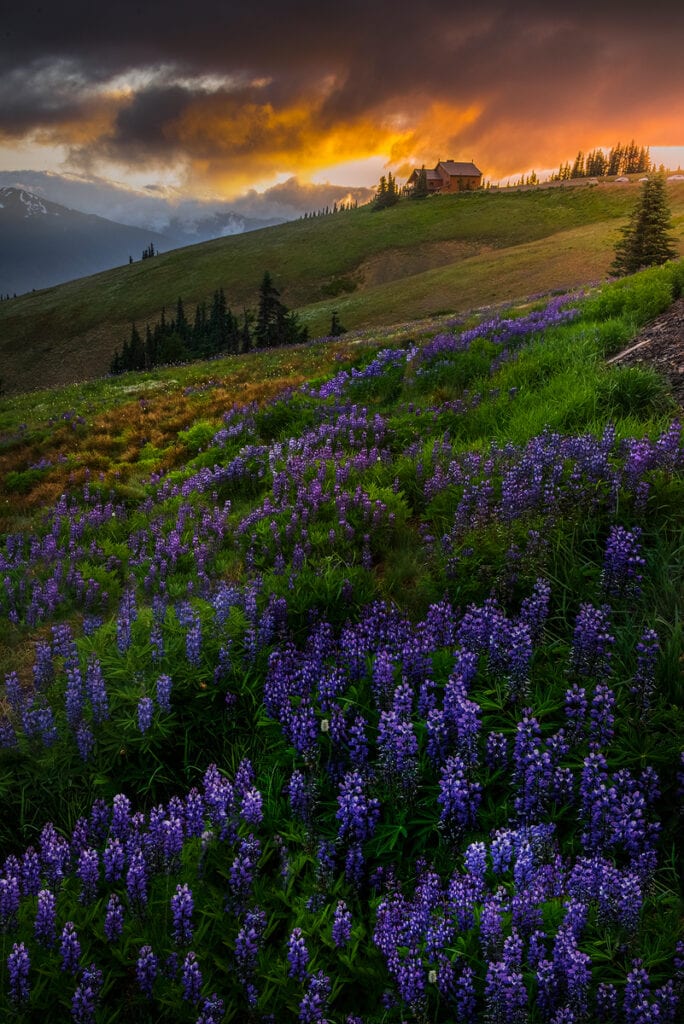Tips and Tricks for Successful Wildflower Photography
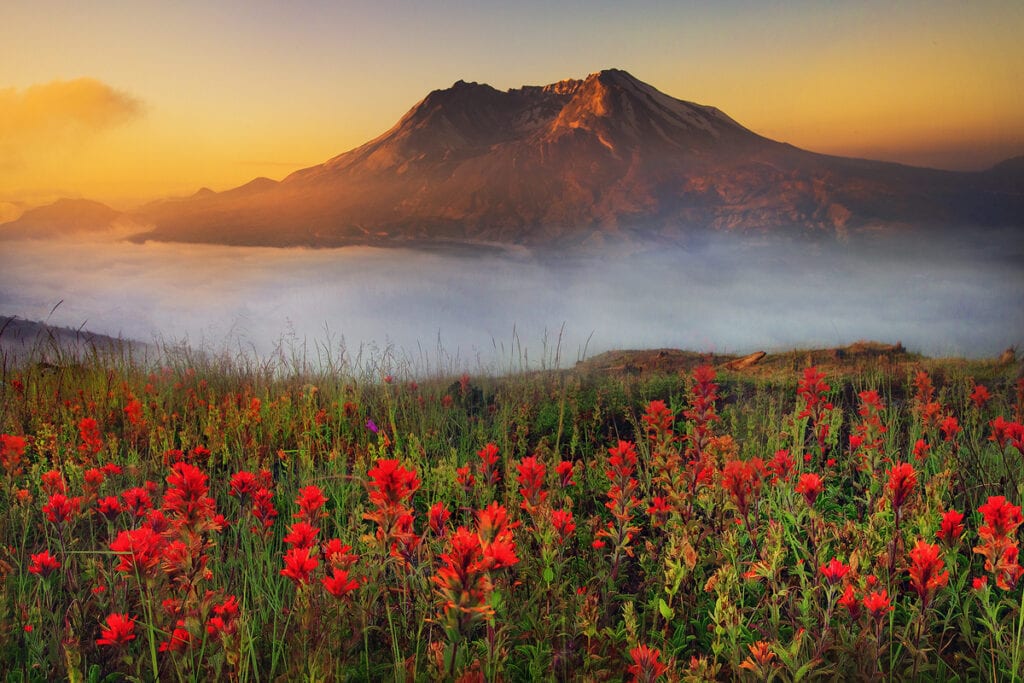
My favorite time of the year for photography has always been wildflower season! In the Pacific Northwest, you will find several different mountain ranges and regions that showcase incredible meadows. I must admit, my initial attraction came after seeing amazing images of Mount Rainier and Mount St. Helens, bathed in vast amounts of beautiful wildflowers. The meadows would burst with color and go on forever with no end in sight. The combination of flowers and larger than life mountain peaks drew me to the subject of wildflower photography.
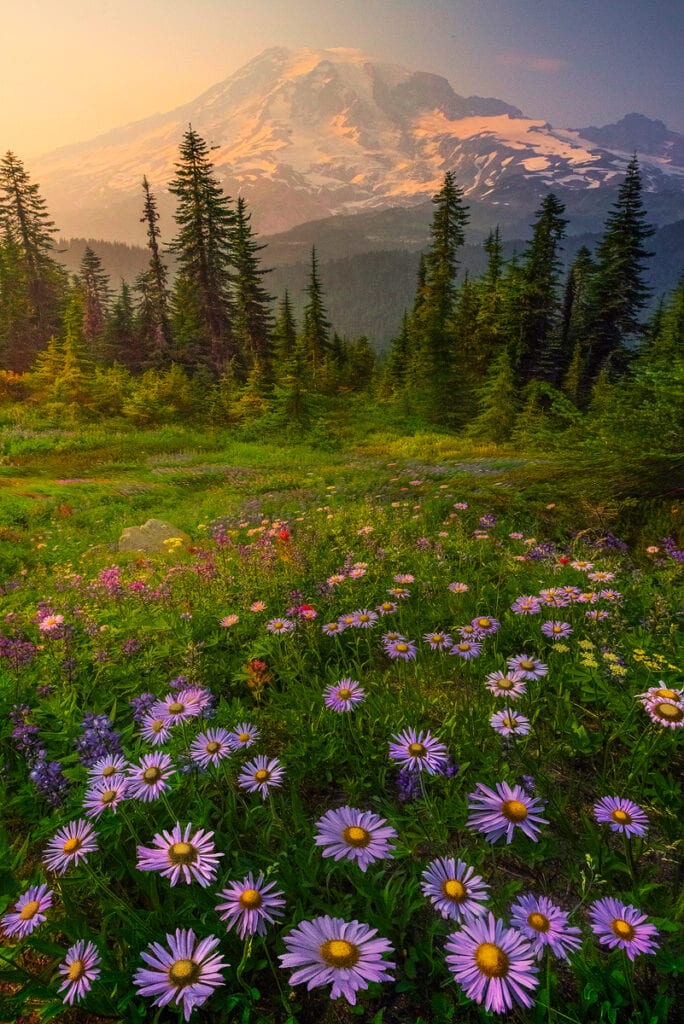
When my obsession with wildflower photography first began, I was hiking anywhere and everywhere in search of the perfect patch. With every new season, I learned from my mistakes and got a little better each year. In this article, I hope to share some of those tips and tricks to help you capture fantastic wildflower images.
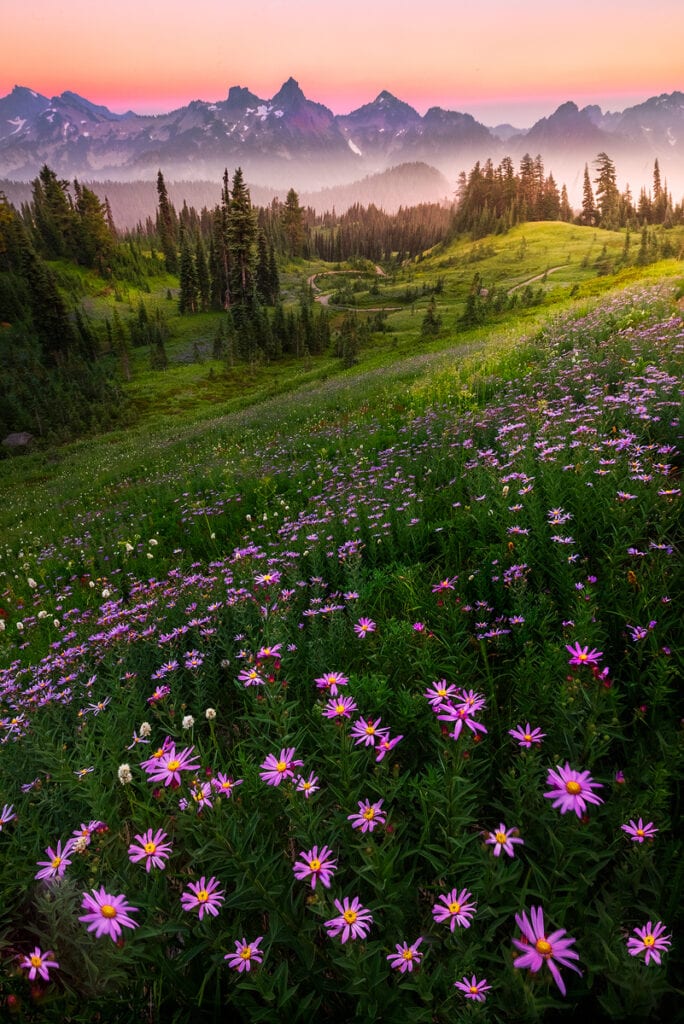
The first and most important step to successful wildflower photography is doing your research. This can be accomplished using the Internet, books, and apps that help identify prime flower locations. There are many books as well as internet sites that are very specific in regards to peak times and locations. Forums and trip reports can also prove very helpful, as can looking back at past seasons. Here is Washington, we have an organization called Washington Trails Association. It’s an active form where like-minded people share information, images, and tips about specific hikes, with downloadable GPS tracks included. Peak season for wildflowers varies quite a bit so make sure to research a wide variety of sources. Your local ranger station is another great resource for finding peak times and locations.
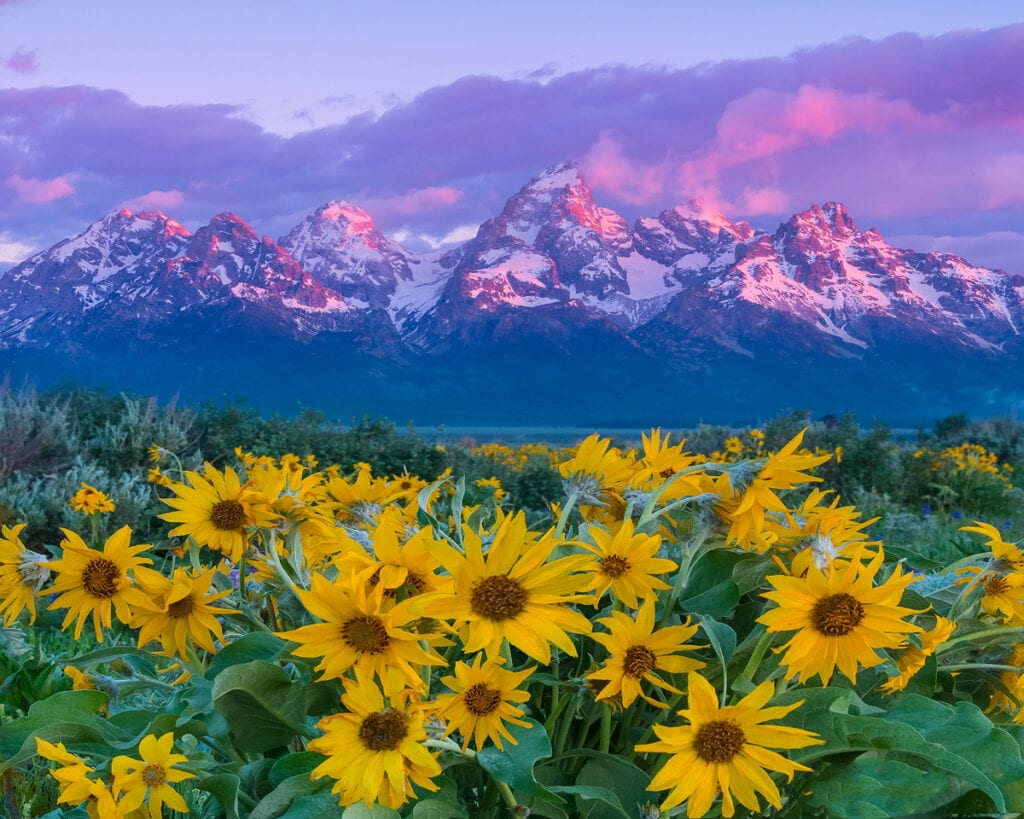
The next step in successful wildflower photography is having the right equipment. Expensive is not necessarily better, but there are a few important features you should look for. A tripod is a must and should be used at all times when photographing flowers. The tripod allows you to be more specific with your composition and the flexibility to frame as needed. Your tripod should be sturdy, and strong enough to minimize movement of the camera. Tripods that are lighter and less solid can move slightly, causing the image to have a blur that can’t be seen on the LCD in the field. Cameras are improving at a fast rate and most do a great job producing quality images with little to no noise. Lens choice is also a very important consideration. Over the past 12 years, I have found that faster and wider lenses make a huge difference when it comes to the overall impact of the image. Flowers are very delicate, therefore, any presence of wind can cause movement and reduce detail. Having a fast lens with an aperture of 2.8, combined with a faster ISO and shutter speed can reduce the chance of blurred images. Just beware that increasing your ISO also increases the overall noise in the image. It’s critical to find that balance of increasing the ISO but not so much that it introduces noise. I generally use f/13-f/16 unless the wind is very strong. In these situations, shoot the foreground at a higher aperture like f/8, followed by another image for the background, at f/16 and combine the two in post-processing. This technique is used only if the wind is so strong that the higher ISO introduces too much noise in the overall image. When it comes to aesthetics, I prefer wide-angle lenses in the 11-24mm range, as the wide view allows for more creative choices. Although this is a personal choice, I prefer to include as many foreground flowers as possible.

As with most areas of photography, composition is critical in achieving successful imagery. Wildflower photography is a highly visual and expressive art, therefore, the elements and textures are so bold it’s easy to include too much. Wildflower meadows can be very busy and overwhelming, causing many beginners to include as much in frame as possible leading to a very busy, chaotic and unorganized image. It’s important to take this into consideration when assessing what to include in the overall composition. It’s always better to include less and be more specific. Simplifying the composition will go a long way in creating an image that is cohesive and pleasing.

When photographing flowers, I try to think in terms of warm and cool tones. The color wheel is a great reference, and be sure to pay close attention to your complementary colors. Frame the composition of the flowers so that the overall balance is not dominated by only warm or cool tones in any one region of the image. Each color has its own weight and having too much, or not enough of that color on either side can pull the viewers eye to that part of the image rather than allowing it to flow throughout the entire frame. For example, the lupine in Washington have a purple color and thus a cool tone. I look to complement that cool color with a warmer tone flower such as a red Indian paintbrush. Having an image with a good mix of both flowers is more visually pleasing.
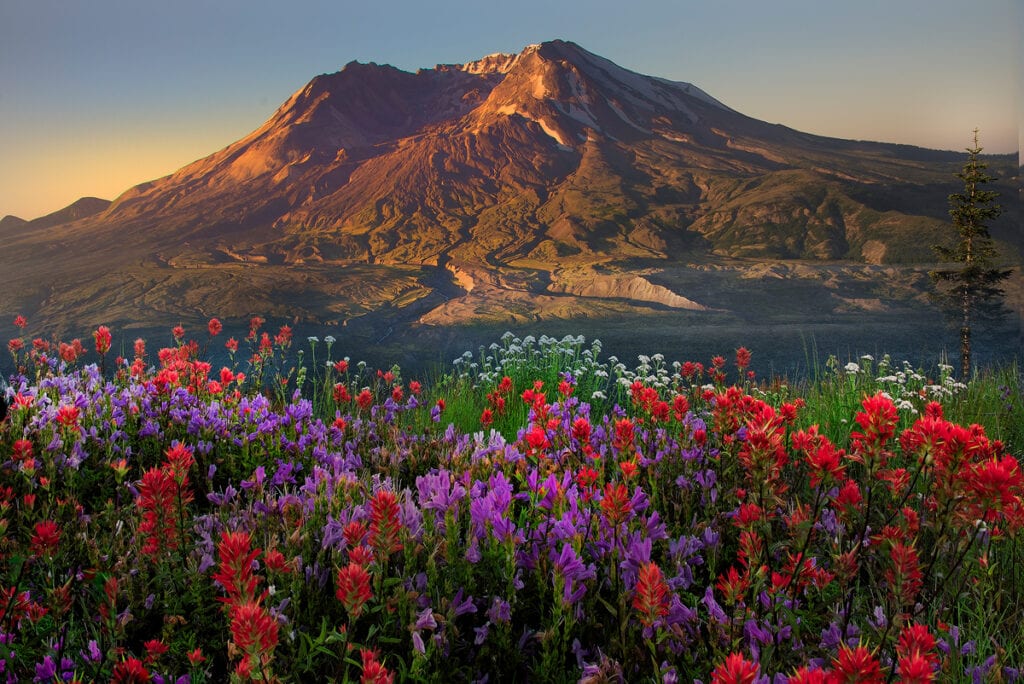
The use of lighting can make or break and image. As with other subjects in photography, lighting, whether it be natural or artificial, can bring your image to life. You can execute all of the above mentioned tips to perfection but light is the one thing that truly makes an image stand out. Using light can really bring attention to the main subject and interest of the image. Many photographers are under the impression that it’s best to shoot flowers during the day when sunlight is at it’s strongest. Often times midday light leads to harsh contrast, very dark shadows and hot highlights that strip the color from the flowers and lead to a very unpleasing image. It’s best to photograph wildflowers in the very last moments of the day as the sun is near the horizon. These few moments of spotlight really showcase the flowers in warm, soft light that draws the viewer’s attention. Another good opportunity to photograph wildflowers is when the sun is not present. The flowers will be cast in soft cool light, and the even contrast across the scene makes for a pleasing color balance. If used in the right way, light can make all the difference in your photographs!
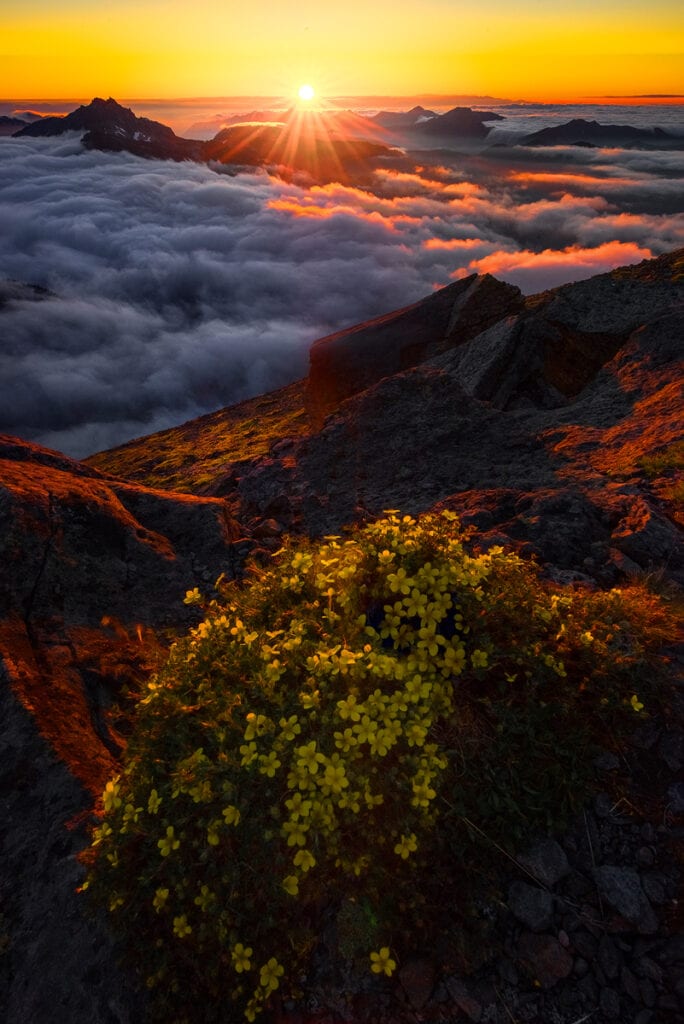
In summary, it goes a long way to have the right equipment. Being aware of your camera settings and composition creates images that are full of detail and easier to process in Photoshop. Combining the following recommendations with the right light greatly increases the odds of capturing memorable wildflower images. Lastly, remember to dress appropriately for the adventure. Bring lots of layers, as the mountains can be unpredictable, especially at night. Most of all have fun; you are seeing nature at is best!
